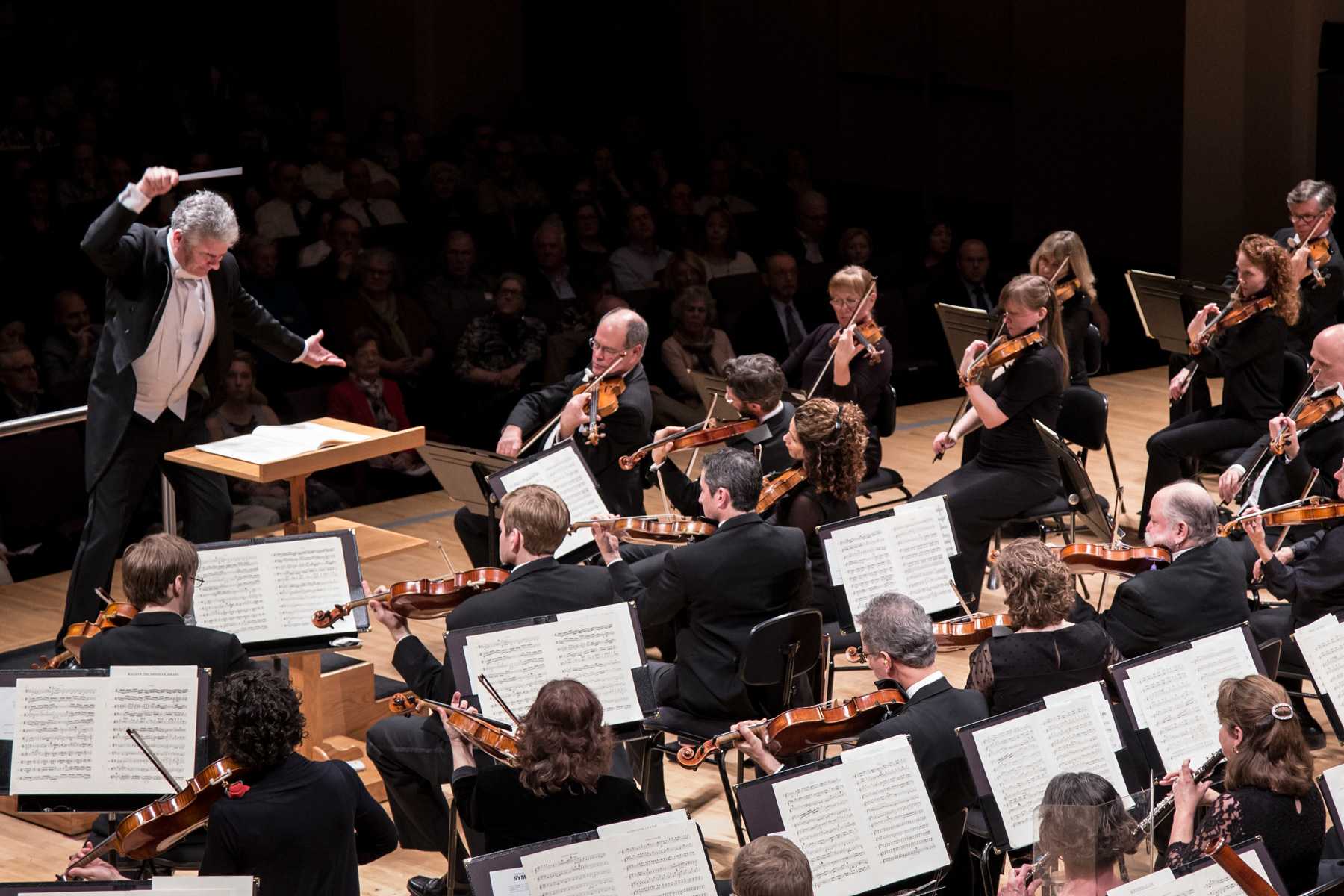The North Carolina Symphony, alongside the Cherokee Chamber singers, combined and showcased songs in Cherokee and English, influenced by a variety of genres and styles of music on Oct. 19 at the Schaefer Center for the Performing Arts.
“Three years ago, the artistic leadership at the North Carolina Symphony had the vision to develop a partnership with the Eastern Band of Cherokee Indians, and to commission a new work as part of that partnership,” composer William Brittelle said.
Brittelle said that during his time with the Cherokee he was able to inform himself more about the history, culture and the atrocities committed against the Cherokee people.
The Cherokee Chamber singers are a vocal ensemble made up of students from Cherokee High School in Cherokee, North Carolina, under the direction of Michael Yannette. Their group gives a glimpse of not only traditional and modern Native American music, but also has influences from choral, classical, musical theater and pop/rock genres.
The songs sung were in English and Cherokee, with songs such as “Si Otsedoha (We’re Still Here),” “When Money Becomes Religion, Degansugalv Unesdali Gosvtanv (Walls of Glass)” and a finale of “Amazing Grace” in Cherokee.
These songs paint a variety of stories that convey different emotions. They contained lyrics such as “Cherokee is hope, Cherokee is strong” comparing the Cherokee Chambers and their community to a Phoenix.
The Cherokee Chamber singers touched many of the audience members.
“Native youth are changing the world,” Tori Hunt, a sophomore chemistry major, said.
The song “When Money Becomes Religion” also spoke of exposing the devastating effects of putting material items before human lives, with lyrics such as “when money becomes religion, bodies become artifacts, and our culture becomes history.”
This concert was one of the North Carolina Symphony’s 300 concerts that are enjoyed by children and adults alike each year, according to North Carolina Symphony’s program.
Appalachian State Hayes School of Music students played alongside the North Carolina Symphony members.
“They were very knowledgeable and experienced in playing,” Cole Jenkins, a freshman majoring in cello performance, said. “It was really cool being surrounded by many pros and playing with them, and seeing them play with all the singers. It was really cool.”
Not only were music students at App State excited to be able to play alongside these musicians, but many spectators, including natives themselves were happy to see their culture be displayed correctly.
“It was really cool seeing my own language up on stage because usually you only get that on the boundary, and even when it is on the boundary, it’s the same old songs over and over again,” Anya Walsh, an undeclared freshman who is a member of the Cherokee nation, said.
“Even though we’ve faced terrible tragedies in the past, our future is still shining bright,” one of the Cherokee Chamber singers, Lucian Davis, said, drawing a connection between their music and the symbol of a phoenix rising from the ashes.
Story by Marbeth Salinas
Photos courtesy of Michael Zirkle
Featured photo caption: The North Carolina Symphony performing, led by Music Director, Grant Llewellyn.

